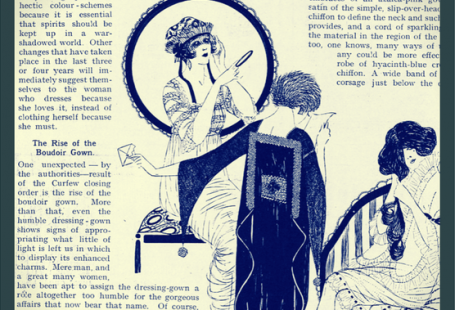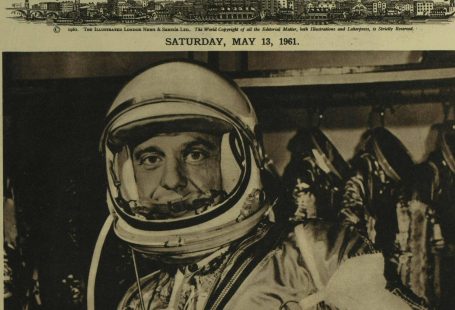By 1953 the dance hall was the second biggest entertainment industry after cinema, with an estimated 200 million visitors per year. It was thought that up to 70% of couples met on the dance floor. Today, the dance hall is consigned to history, but for many from the 1920s through to the 1970s it was a weekly fixture, representing an escape from the monotony of daily life.
In this special blog we take a look at the colourful story of the dance hall; from fears throughout their existence about their moral impact on young people, to their unique role in match-making, using headlines from the British Newspaper Archive.
The Dancing Itself is the Thing
An article in the Birmingham Daily Gazette, January 1924, ponders the question posed by Birmingham’s leading social reformers – ‘if there is not too much dancing, and whither it is leading Birmingham’s youth?’
The piece is largely dismissive of such fears, describing the writer’s visit to one local dance hall. With the dancing in full swing, refreshment tables are scattered about, laden with drinks ‘of the most innocuous character, nothing more dangerous than lemonade, coffee, etc.’
Birmingham Daily Gazette | 28 November 1927
The writer hones in on two young female flapper types, one of whom exclaims as she sits down next to her friend ‘That fellow couldn’t dance for nuts.’ Indeed, the ‘dancing itself is the thing:’
Contrary to a belief held by certain critics, Birmingham’s youth goes to a dance hall to dance, and not make indiscriminate liaisons with the opposite sex. It is their escape from the everyday, matter-of-fact world to a realm of romantic make-believe. Can we honestly begrudge them this brief release from the hard facts of a material existence?
‘All is not well in Northampton’
But the Chief Constable in Northampton and the Southampton Social Hygiene Council did not agree. The Rev Arthur E Boyce, Branch Secretary of the latter, raises concerns about the ‘vice’ brought about by dance halls in Southampton. In the Portsmouth Evening News, September 1926, Boyce voices his concerns about boys of eighteen and nineteen entering dance halls ‘pockets bulging with bottles of whisky,’ before leaving at 2 o’clock in the morning accompanied by flappers.
This moral panic of the 1920s and 1930s centres largely on a fear of drunkenness, and particularly of female drunkenness. An article in the Daily Herald, April 1925, describes a move in Glasgow to ban girls under the age of eighteen from dance halls, as they ‘might be subjected to drink and moral temptation.’
Coral Brown plays the manageress of a dance hall in ‘The Gusher’ | The Sketch | 8 September 1937
One incident in 1934 caused the Chief Constable of Northampton to exclaim that ‘all is not well’ in the city. A sixteen-year-old female shoe operative had been discovered ‘helpless on the pavement near to a dance hall.’ Whilst the Chief Constable was aware of the dangers that she could have encountered ‘in the hands of an unscrupulous person,’ it his moral outrage which outweighs his concern:
She was bestially drunk. She laid in the charge office in the most disgusting condition. My officers said they were revolted.
Girls Are Ruined in the Dance Hall
Four years later, the village of Cobham in Surrey held a kind of mock trial, after 77-year-old resident and former schoolteacher Mr T R Daly made a complaint about the local dance hall, claiming that ‘girls are ruined in the dance hall, that the morals there rival those of Sodom and Gomorrah.’
A local matter, this trial was picked up by national paper the Daily Mirror, which described how the unsympathetic crowd, consisting of half the village, roared with laughter at the elderly man’s claims.
Birmingham Daily Gazette | 28 November 1927
Mr Daly, who professed to holding ‘strong Puritan views,’ described seeing ‘a woman in a drunken stupor with her head on a man’s shoulder. At the back of the hall I saw something which upset my moral equilibrium.’
Whatever Mr Daly had seen at the dance hall that January evening is not made clear, but he also (shockingly) saw a ‘man and a woman falling over a heap of coal.’
The tone of this article suggests no real fear of the morals of the dance hall – but with the move into the second half of the century, the dance hall was to become a locus of crime, targeted by teddy boys, vandals and the like.
Dance Hall Bad Behaviour
By the 1950s the popularity of dance halls had reached their peak. But with such popularity came a crime wave, which is recorded by many articles in the British Newspaper Archive.
In 1950 two young men from Malahide, Ireland, were fined for ‘disorderly behaviour and for using obscene language outside a dance hall,’ according to the Drogheda Argus and Leinster Journal.
One young miner in Wallsend went further than using bad language in 1953, according to the Shields Daily News. Forcing his way into a dance at the Memorial Hall, to which he had been denied access, he brandished an automatic pistol at the crowd and said: ‘If anybody touches my mates, I’ll blow their brains out.’
At a Saturday night jive session in Sittingbourne, July 1962, a brawl ensued and the organiser was ‘kicked in the stomach.’ The East Kent Gazette reports how when it was announced that the ‘dance would be abandoned, the microphone…was smashed on the stage.’
Coventry Evening Telegraph | 27 February 1967
In Nuneaton, 1967, the Co-operative Dance Hall was vandalised, making it look as though ‘a bomb had hit the place,’ whilst the Birmingham Daily Post remarks in 1957 that the ‘continuing disturbances at public dances present ‘a sad picture of modern life.’
Met, Danced and Fell In Love
But dance halls were not all about thuggish teddy boys and bad behaviour, far from it. Indeed, the dance hall was responsible for many couples finding love.
Local newspapers abound with tales of star-crossed lovers meeting on the dance floor. The West London Observer, June 1956, tells of one such couple ‘who met, danced and fell in love all in one evening.’ They had met at the Hammersmith Palais, one of the most famous dance halls in the country, just like the girl’s parents had in 1919 when the Palais was first opened. Indeed, the groom went one further and proposed on the very same evening that they met!
West London Observer | 7 June 1957
Other dance hall marriages are described in abundance. In the same newspaper couples are described as meeting also at the Hammersith Palais, and at Kensington Town Hall.
West London Observer | 5 April 1957
From Dance Hall to Disco
By the 1970s, the dance hall had largely fallen out of favour. There were cultural and social reasons behind this shift. Dance hall etiquette had become outmoded – women were simply fed up of having to be asked to dance. Furthermore, music and dance fashions began to change, and the advent of the disco movement led to the establishment of nightclubs as we know them today. The most famous dance hall of them all, the Hammersmith Palais, was by 1978 advertising itself as the ‘biggest disco in town.’













